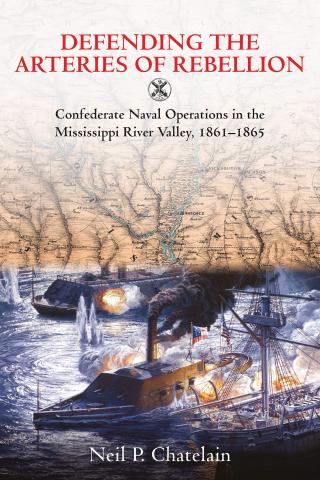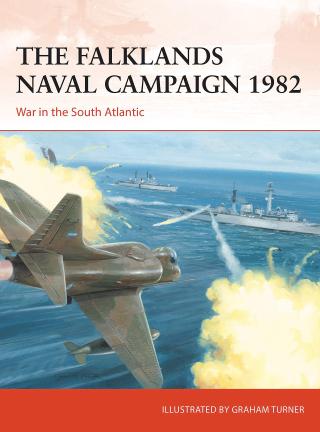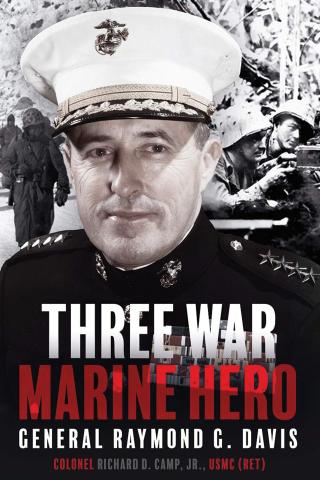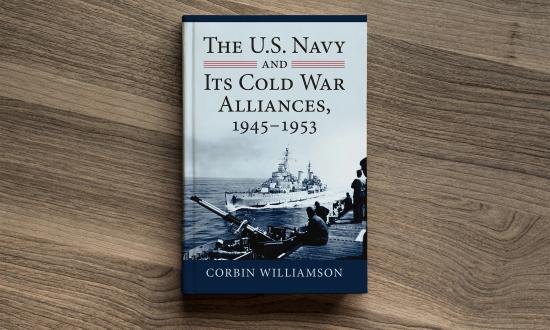The British Navy in the Caribbean
John D. Grainger. London: Boydell and Brewer, 2021. 279 pp. $150.
Reviewed by Commander BJ Armstrong, U.S. Navy
Recent years have seen increasing discussion of great power competition in the world. Britain, in particular, has set itself on a new strategic course with the embrace of “Brexit” and the strategic ideals of a “Global Britain.” As HMS Queen Elizabeth and her escorts sail for the Pacific and seas in between, the first British aircraft carrier deployment in decades, it is important to remember that global Britain comes with a global past. For a time, Britain was the world’s naval hegemon, but that was not always the case. John Grainger’s The British Navy in the Caribbean tells the story of British naval power in a critical part of the Western Hemisphere, and it reminds readers that the rise of new powers, attempts at resurgence by older powers, and the dangerous competition for standing in the world, have a long history.
The British Navy in the Caribbean can best be described as a chronicle of British maritime power in and around the Caribbean Sea from the 16th to 20th century. The first five chapters survey the initial English forays into the Caribbean in the era of exploration and European colonization. The Spanish Empire’s dominance of the region, and English competition with Spain, meant that initial efforts were both small and tentative. The doctrine of “no peace beyond the line,” an unwritten understanding by the great powers that the Western Hemisphere was in a constant state of competition, meant that the Caribbean became a literal Wild West. This resulted in British maritime interests made up of a mix of government efforts, privateers, pirates, slavers, smugglers, and outright criminals. Great power competition was, and is, messy, with plenty of activity in the gray area between war and peace.
The middle four chapters survey the great power wars of the end of the 17th and 18th centuries. The Anglo- and Franco-Dutch Wars, the War of the Grand Alliance, the War of Jenkins’ Ear, all involved combat and colonial maneuvering in the Western Hemisphere and shaped the seascape and landscape of the Caribbean. By the outbreak of the Seven Years’ War, English sea power had finally and fully been transformed into the Royal Navy as the global military, diplomatic, and economic arm of a powerful British Empire.
The final four chapters of the book illustrate the peak of British naval power in the war surrounding American independence and the French Wars at the turn of the 19th century. These conflicts, and the Pax Britannica that followed, were the crest of the wave of British maritime influence and power in the Caribbean. But the introduction and slow rise of the United States in the Western Hemisphere also set the stage for British decline charted in the final chapter.
Grainger’s The British Navy in the Caribbean is a solid survey and retelling of the history. Based mostly on a synthesis of secondary sources, some of the research is a bit dated, but the author’s clear writing and well-organized chapters carry the story along well. The book is mostly narrative, rarely stopping to make significant arguments about the history or illuminating the larger issues at stake. There are a few assertions the author fails to support with evidence, such as the claim that President Franklin D. Roosevelt’s main goal in World War II was destruction of the British Empire rather than the defeat of fascism. But these are mostly asides and not overly material to the larger story the book tells well. Despite its ridiculous price, The British Navy in the Caribbean is a solid chronicle of British maritime power in the Caribbean and a good background for undergraduates or anyone looking to understand the wide history of what it has meant to be a global Britain.
CDR Armstrong is a permanent military professor with the U.S. Naval Academy History Department. He earned his PhD from King’s College, London, and is the coauthor of Developing the Naval Mind, forthcoming from the Naval Institute Press.
Defending the Arteries of Rebellion: Confederate Naval Operations in the Mississippi River Valley, 1861–1865
Neil P. Chatelain. El Dorado Hills, CA: Savas Beatie, 2020. 324 pp. Maps. Biblio. Index. $32.95.
Reviewed by Lieutenant Katrina R. Jorsch, U.S. Navy
There has been much written about the river campaigns during the Civil War and the tactics used by the Union Navy to ultimately gain control of the Western rivers and greatly assist the Union victory over the Confederacy. Neil P. Chatelain adds to the discussion in his book Defending the Arteries of Rebellion, in which he analyzes the overall strategy of the Confederacy throughout the Civil War, rather than focusing on one particular campaign or solely the efforts of the Union. Chatelain argues that there has not been an adequate examination of the actions taken by the Confederacy for a variety reasons, and he seeks to better demonstrate “how the Confederacy learned quickly to defend its rivers for more than three years using impromptu construction, innovations, and ad hoc forces.”
The book examines the operations and strategies developed to counteract the Union goal of control by building ships from scratch, reinforcing forts and installations along the rivers, and adapting tactics as challenges arose. He shows that while the Confederacy had neither the same resources available as the Union nor the means to eke out a victory, Confederate leaders developed flexible plans and acted proactively so as to not give up the rivers without a fight.
The book is broken into four main sections to highlight the individual campaigns chronologically and thematically within the framework of Confederate naval strategy. The first section focuses on initial efforts by the Confederacy to establish a naval presence on the Western rivers, while the next two sections focus on the attempts to control the rivers and emphasizes major battles and campaigns, including the Battle of Vicksburg. The final section features the defensive movements in the tributaries of the Mississippi River as the war came to an end. The descriptions of these sections are found in the introduction, but they are not specifically identified in the table of contents or throughout the book, making it challenging to remember and understand the connection between the chapters. Smaller subsections in each chapter provide clear breaks and shifts in topics or battles, and in some instances, the overall tie to the argument is lost in the disjointed flow.
Defending the Arteries of Rebellion is an extremely thorough chronicle of Confederate efforts in the Western rivers that uses many primary source documents, such as memoirs, diaries, and correspondence, along with a variety of government documents. Many vivid descriptions of the campaigns and ships involved paint a fuller picture of the events but, at times, can cause the reader to be blinded by the minutiae and lose sight of the overall argument. When trying to associate the people, events, places, etc., that span multiple chapters or sections of the book to connect the ideas, the index ordinarily would be the best place to start; unfortunately, the pagination does not match, which makes it more difficult to piece everything together.
Chatelain includes original maps throughout the book, bringing the river geography to life in a way that proves invaluable to fully understanding the movements he describes in great detail. The use of photos of the individuals he writes about and images of vessels also bring helpful visual connections to the text. Finally, the inclusion of a list and corresponding definitions of vessels and organizations provides a better general understanding for the reader who is unfamiliar with different types of vessels used during the Civil War.
While some aspects get lost in the book’s many details and the subsections, Chatelain provides an in-depth analysis, accomplishing his intent of demonstrating the adaptability and innovation of the Confederacy in defending the Western rivers during the Civil War.
LT Jorsch is a surface warfare officer who recently completed a tour teaching history at the U.S. Naval Academy. She has a master’s in history from George Mason University and is currently in department head school.
The Falklands Naval Campaign, 1982: War in the South Atlantic
Edward Hampshire. Oxford, UK: Osprey, 2021. 96 pp. Photos. Index. $24.
Reviewed by Chris Timmers
The 40th anniversary of the Falklands War is approaching—a war fought in a remote part of the globe for ten weeks for the right to govern a group of islands whose existence was hardly critical militarily or economically to either of the belligerents.
Both Argentina and the United Kingdom had claims on the Falkland Islands. Throughout the 1960s, Britain pursued a policy of divesting itself of as many colonies as it could. But in the matter of the Falklands, it was the islanders themselves whose claim to British citizenship effectively scuttled negotiations.
In 1976, a coup in Argentina led by its military overthrew then-President Isabel Peron. This coup ushered in an era of repression that came to be known as the “Dirty War” and targeted dissidents, politicians, trade unionists, journalists, and foreign nationals living in Argentina. After several years of economic chaos, characterized by the sinking value of the Argentine peso on world currency markets and an almost complete depletion of foreign currency reserves, the Junta (as the coup leaders referred to themselves) decided to gamble their survival on an audacious, if poorly conceived, military venture to take the Falklands back from British control. Military actions, they reasoned, would rouse Argentina’s citizens to action and stimulate the moribund economy.
The Junta woefully underestimated the commitment of the U.K. to support and defend the citizenship of the 1,200 British subjects in the Falklands. This error was compounded by the belief that Argentina could count on support from the United States. A new U.S. President, Ronald Reagan, recently had been elected and pledged his administration to the task of shoring up relations with Latin American military regimes, which his predecessor had avoided.
On 2 April 1982, Argentine commandos landed near the capital city of Stanley, followed by a larger (900 marines) amphibious force. The fallacy of the Junta’s belief that U.S. support would be forthcoming was made public when, the very next day, the United States, together with nine other members of the U.N. Security Council, voted in favor of U.N. resolution 502, which gave the U.K. the option to invoke Article 51 of the U.N. Charter and claim the right to self-defense. On this same day, a British task force set sail to recover the Falklands.
Because the Argentinians were not fully prepared for such a focused, forceful, and swift response and because British commanders (led by Prime Minister Margaret Thatcher) did not take the matter of ejecting the Argentinians lightly, a decisive U.K. victory was achieved in a relatively short time. The lopsidedness of the victory can be seen in the aftermath of the war: In exchanging prisoners of war after the fighting, the Argentines turned over 115 British servicemen. The British released 11,313 Argentines.
Author Edward Hampshire, historian at the Naval Historical Branch of the Ministry of Defence, has written extensively of U.K. naval and defense policy since 1945. His quick-paced narrative is ably supported by artwork from Graham Turner, a leading British historical artist.
The Falklands War proves (again) the old adage that fortune favors the brave, and, in this case, she also favors the prepared.
Mr. Timmers, a graduate of the U.S. Military Academy, is a freelance writer specializing in military affairs. He has served with the 82nd Airborne Division, the 3rd Infantry Division, and was a liaison officer with the German Army’s 4th Infantry Division.
Living in the Shadow of a Hell Ship: The Survival Story of U.S. Marine George Burlage, a WWII Prisoner-of-War of the Japanese
Georgianne Burlage, ed. Denton, TX: University of North Texas Press, 2020. 256 pp. Illus. Maps. Biblio. Index. $29.95.
Reviewed by Major Timothy Heck, U.S. Marine Corps Reserve
On 6 May 1942, Marine Corporal George Burlage and the remaining Americans on Corregidor, an island in the Philippines, surrendered to Japanese forces after months of resistance. The defenders on Bataan had surrendered a month prior, shortly thereafter embarking on the Bataan Death March, which cost the lives of thousands of Filipino and American prisoners. Corregidor’s survivors were weakened after months under siege with limited food, water, and medicine, let alone rest or a break from combat.
Living in the Shadow of a Hell Ship: The Survival Story of U.S. Marine George Burlage, a WWII Prisoner-of-War of the Japanese is a posthumously published volume edited by Burlage’s daughter, Georgianne Burlage. Prior to his death in 2008, Burlage began collating his writings about his experiences as a POW. Georgianne discovered the storage box after his death and organized and synthesized his work to create the narrative. Burlage’s first-person narrative drives the writing and, as expected, the story reads like the retelling it is. Phrases, transitions, and stories retain their aura of authenticity, which allows the reader to feel they are sitting in an audience of Burlage’s.
His will to survive is central to the story presented. Whether it was in his decision to leave Cabanatuan and work on Palawan or in his frequent efforts at sabotage, Burlage survived against daunting odds through a combination of willpower and luck. As an example, Burlage was transferred from Palawan to Bilibid in Manila in 1942 as a result of malaria. In 1944, most of his fellow prisoners at Palawan were executed by the Japanese.
In some ways, Burlage’s optimism and survival can be linked to his small acts of resistance against the Japanese. Most of the acts were minor, but others, such as the intentionally shoddy construction of a Japanese airfield, hampered the Japanese war effort while also boosting morale. Burlage did suffer for his resistance, but the results seemed worth the punishment.
Perhaps most impactful is Burlage’s recounting of his time on board the Hokusen Maru, one of the titular “hell ships,” from Manila to Hong Kong and onward to Formosa, before being transferred to another ship and mainland Japan. Life in the holds was brutal. The hell ships were particularly lethal to the prisoners, with some 20,000 POWs dying as a result of mistreatment or the ships being sunk by Allied action. Again, Burlage’s will to live and overcome led to his survival.
After liberation, Burlage stayed in the Marine Corps, mostly in public affairs. He served in the Korean War and eventually retired as a master sergeant in 1959. His later career is quickly covered, but Georgianne includes a 1952 reflection piece he wrote about his return to Corregidor for Leatherneck. It is apparent, after reading this piece, that while Burlage lived in the shadow of the hell ships and his captivity for the rest of his life, he was indeed a fortunate survivor. Burlage’s narrative and story are a reminder of the strength of will needed to overcome the horrors of captivity. Readers interested in mental resilience, prisoner survival, and the history of the Marines who make up the Corps will find Living in the Shadow of a Hell Ship a quick and engaging read.
Maj Heck is the deputy editorial director at the Modern War Institute at West Point. He is also a major in the Marine Corps Reserve serving at the Joint History Office as part of the Marine Corps History Detachment.
Three War Marine Hero: General Raymond G. Davis
Richard D. Camp. Havertown, PA: Casemate Publishers, 2020. 231 pp. Appx. Biblio. Notes. Illus. Photos. $34.95.
Reviewed by Mark Folse
Richard Camp’s Three War Marine Hero is a biography of General Raymond G. Davis, a Medal of Honor winner and veteran of World War II, Korea, and Vietnam. Camp, Davis’ former aide-de-camp in Vietnam and author of more than a dozen books, bases his research on oral history transcripts, personal interviews, and autobiographical sources. Even though Davis has received little scholarly attention, Camp’s book reveals him to be one of the most important general officers in Marine Corps history who did not become Commandant, outside of James Mattis or Victor Krulak.
Camp’s work spans all three wars in which Davis fought. During World War II, Davis served at Guadalcanal and Cape Gloucester as an antiaircraft officer and became an infantry battalion commander just in time for the beach assault at Peleliu. Davis went on to command the 1st Battalion, 7th Marines, in Korea from the landing at Inchon through the arctic fighting conditions of the Chosin Reservoir, where he earned two Silver Stars, a Legion of Merit, and, later, a Medal of Honor. In South Vietnam, he led the 3d Marine Division, which conducted combat and combined-action-program operations in the I Corps region. Camp also sprinkles in Davis’ time at Marine Corps schools (Quantico), Guam, Chicago, the Pentagon, and the National War College.
The strength of Camp’s book is the source material. In addition to using Davis’ own oral history transcript, he includes those of Generals Alexander Vandegrift, Clifton Cates, Gerald C. Thomas, and many others. These transcripts allow Camp to narrate from the battalion level and above during key battles such as Guadalcanal, Peleliu, Chosin, and Operation Dewey Canyon. Through personal interviews, unit action reports, and combat memoirs of Marines who served with Davis, Camp captures the hellish conditions Marine Corps infantry faced at the company level and below battling across the islands of the Pacific and in Southeast Asia. This evidence allows Camp to portray Davis as calm and cool under pressure, popular with his troops, and as a natural leader in combat.
His evidence base, however, also is a source of the book’s weaknesses. Davis is largely absent from the first half of the book as the author recreates the fighting around him, particularly at Guadalcanal and Peleliu. Occasionally, Camp overrelies on his sources to tell the story for him. For example, chapter 29 is almost entirely block quotations from Davis’ autobiography and an interview conducted by the Veteran’s History Project.
For a book with a dust jacket claiming Davis was a “devoted family man,” Camp omits of much of Davis’ personal life. Davis’ wife, Knox, and three children rarely appear; there is no mention of the births of two of his kids nor how being separated from his family for long stretches affected him. There is nothing about Davis’ son Miles commissioning as a second lieutenant in the Marine Corps and later getting wounded while serving in his father’s division. The author provides two pictures of Davis awarding his son Purple Hearts, but no prose. These omissions make this story about Davis’ service record, not his personal life, making the book one dimensional.
The book should prove to be a fun read for military history enthusiasts, but its greatest value is as a starting point for future research into Davis’ career that, hopefully, will further illuminate his importance to Marine Corps history.
Dr. Folse is a historian working for the U.S. Army. He was the Class of ’57 Post-Doctoral Fellow at the U.S. Naval Academy from 2018 to 2020, where he taught Navy and Marine Corps history. He serves on the editorial board for Marine Corps History and is an adjunct instructor with Marine Corps University’s College of Distance Education and Training. He was the 2020 Naval History Author of the Year.










